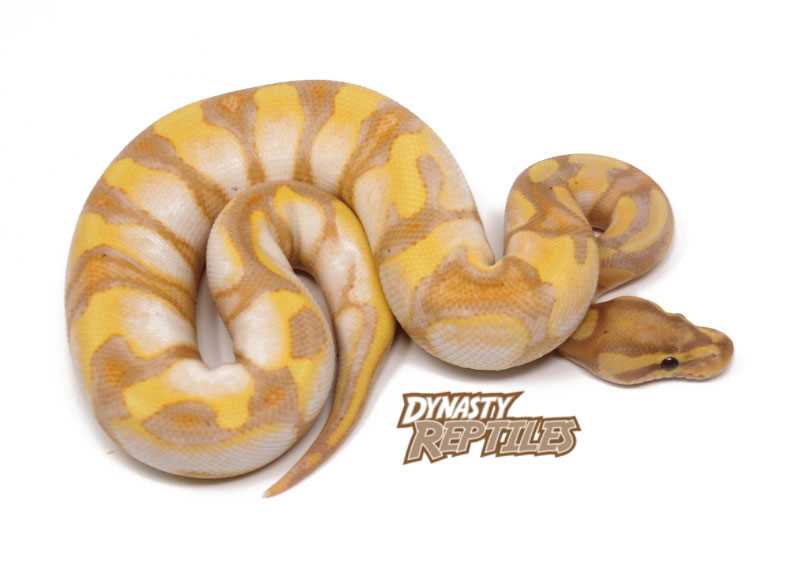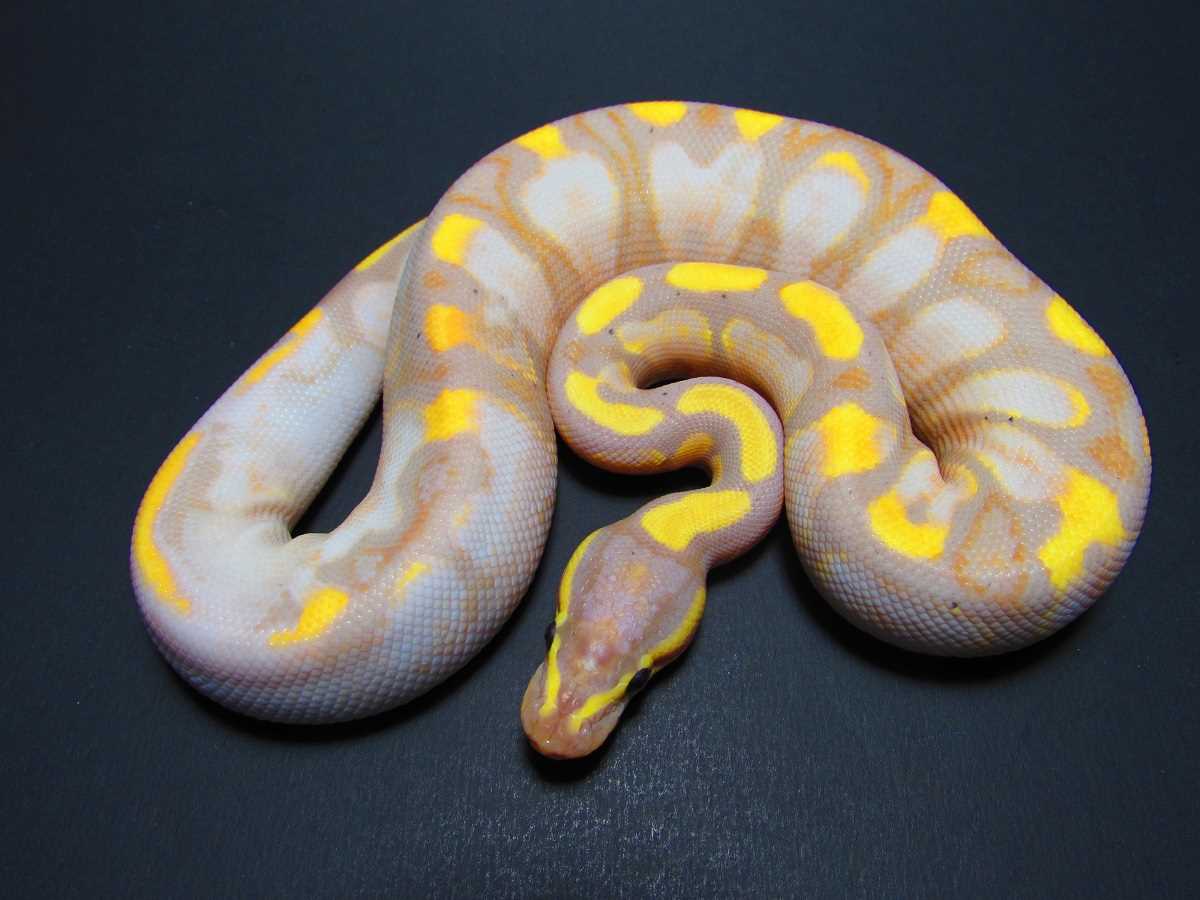
The Banana Calico Ball Python is not only a sight to behold, but it also has a gentle and docile temperament, making it an ideal pet for both beginners and experienced reptile keepers. This snake’s calm nature and manageable size make it easy to handle and care for. With proper handling and a suitable habitat, the Banana Calico Ball Python can live a long and healthy life.
Whether you are a seasoned python enthusiast or just starting out in the world of reptile keeping, the Banana Calico Ball Python is sure to impress. Its striking appearance, combined with its friendly disposition, makes it a popular choice among snake lovers. So, if you are looking to add an extraordinary reptile to your collection, look no further than the Banana Calico Ball Python.
Appearance and Characteristics of the Banana Calico Ball Python

The Banana Calico Ball Python displays a striking yellow coloration that is unlike any other snake. Its bright and vibrant yellow scales, often accompanied by hints of orange, create an eye-catching and mesmerizing appearance. The color intensity may vary from snake to snake, with some displaying a more pale yellow while others have a deep, rich yellow coloration.
One of the most fascinating aspects of the Banana Calico Ball Python is its pattern. This serpent features a calico pattern, characterized by irregular patches of color on its scales. These patches can range from a darker yellow to brown or even black, creating a mosaic-like effect throughout the snake’s body. The calico pattern can vary greatly from one snake to another, making each Banana Calico Ball Python a unique and individual serpent.
In addition to its color and pattern, the Banana Calico Ball Python also has other distinctive characteristics. It has a relatively small size compared to other pythons, with adults typically reaching lengths of 3 to 5 feet. Its body is thick and muscular, giving it a robust and sturdy appearance. The snake’s head is relatively small and features a typical python shape, with two small eyes and a mouth equipped with sharp teeth.
The Banana Calico Ball Python is known for its docile and calm temperament, making it an excellent choice for both beginner and experienced reptile owners. It is generally easy to handle and rarely displays aggressive behavior.
Care and Husbandry for the Banana Calico Ball Python
The banana calico ball python, a colorful reptile, is a popular choice among snake enthusiasts. Known for its striking yellow color and unique calico pattern, this python makes a beautiful addition to any snake collection.
| Aspect | Requirement |
|---|---|
| Enclosure | The snake should be kept in a spacious enclosure with secure locks to prevent escape. A minimum enclosure size of 20-30 gallons is recommended for a single adult python. |
| Temperature | Maintain a temperature gradient in the enclosure, with a hot spot of 88-92°F (31-33°C) and a cooler side around 78-82°F (26-28°C). Use thermostats and thermometers to ensure accurate temperature control. |
| Humidity | The humidity level should be maintained between 50-60% to meet the python’s needs. Use a hygrometer to monitor humidity levels and provide a water bowl for the snake to drink from and soak in. |
| Substrate | Choose a suitable substrate, such as aspen shavings or cypress mulch, that can provide both comfort and humidity control. |
| Feeding | The banana calico ball python is a carnivorous species and should be fed appropriately sized prey items, such as mice or rats, every 7-10 days. Prey should be thawed and warmed to room temperature before feeding. |
| Handling | Handle your snake with care and avoid excessive handling, especially during feeding and shedding periods. Always support the snake’s body and avoid grabbing or squeezing it. |
| Veterinary Care | Regular veterinary check-ups are important to ensure the health of your snake. Find a reptile-knowledgeable veterinarian who can provide routine examinations and address any health concerns. |
By following these care and husbandry guidelines, you can create a comfortable and suitable environment for your banana calico ball python. Remember to regularly monitor the snake’s health, behavior, and environment to ensure a happy and thriving pet.
Breeding and Genetics of the Banana Calico Ball Python
The Banana Calico Ball Python is a result of breeding two recessive morphs: the Banana and the Calico. The Banana morph is known for its yellow color and unique pattern, while the Calico morph adds dramatic coloration and pattern variations. When these two morphs are bred together, they produce offspring with a striking combination of colors and patterns.
The genetics behind the Banana Calico Ball Python is quite fascinating. Both the Banana and Calico morphs are recessive traits, which means that individuals must inherit two copies of the gene to display the traits. When two Banana Calico Ball Pythons are bred together, they can produce offspring with a variety of genetic outcomes.
One possible outcome is the production of more Banana Calico Ball Pythons. These snakes have inherited two copies of both the Banana and Calico genes, resulting in their vibrant and colorful appearance. These snakes are highly valued in the reptile community and are often sought after by breeders and collectors.
Another possible outcome is the production of single gene carriers. These snakes have inherited one copy of either the Banana or Calico gene, but not both. Although they may not display the full visual traits of the Banana Calico Ball Python, they still carry the genetic potential to produce offspring with these traits when bred with the appropriate partner.
Additionally, when breeding Banana Calico Ball Pythons, there is a possibility of producing offspring with visuals that only display one of the parent morphs. These snakes have inherited one copy of either the Banana or Calico gene, but not both. They may not possess the vibrant colors and patterns of the Banana Calico Ball Python, but they still exhibit the traits of one of the parent morphs.
